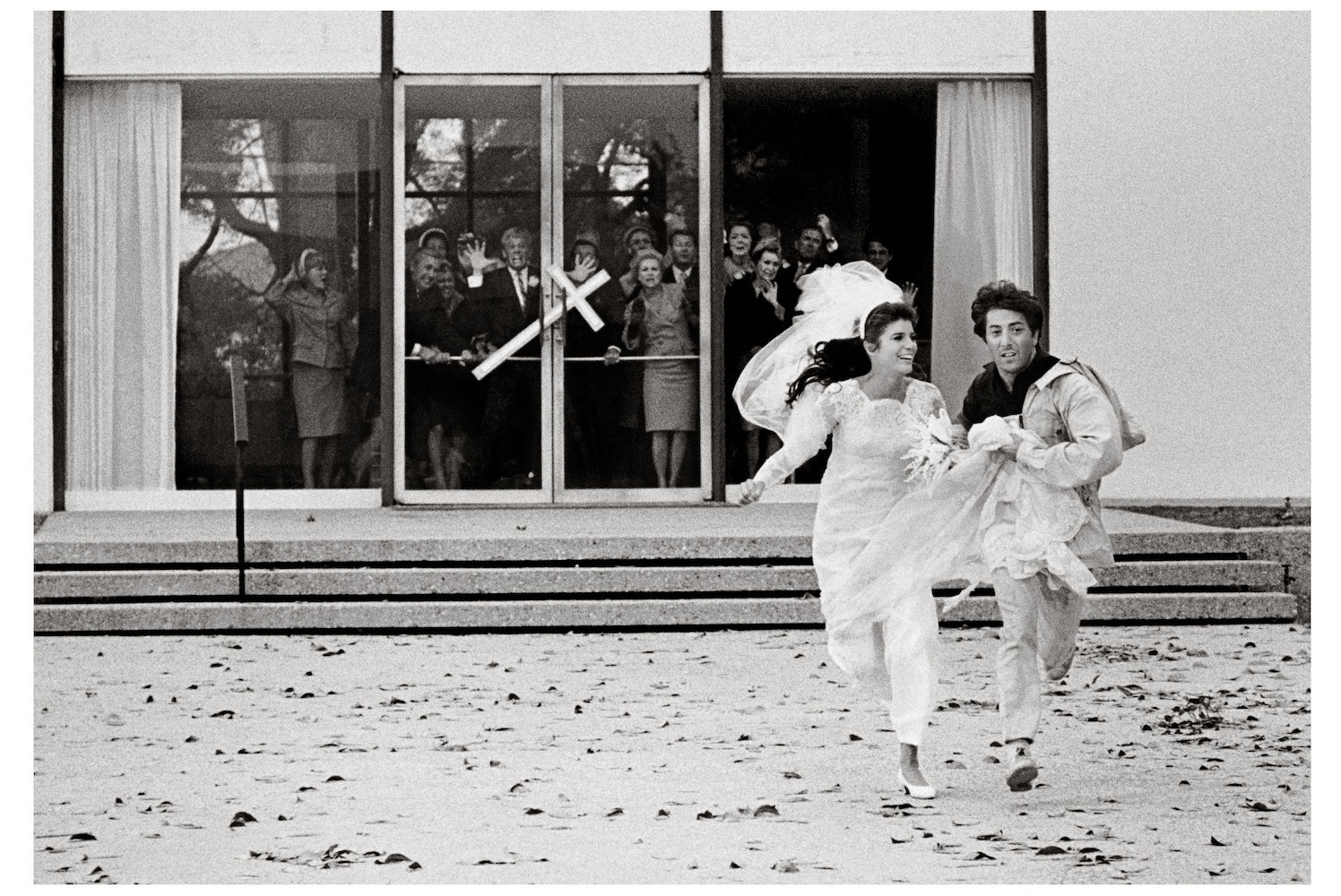Peter O’Toole is staring at me.
Well, not at me, per se. He’s staring at Bob Willoughby. But with the magical intensity and the intimacy of his gaze, the swirl of cigarette smoke wrapping his face, I’d swear he was right in front of me. But this is what Bob Willoughby was known for. For 20 years in Hollywood, Willoughby made a name for himself as an in-demand still and set photographer, working for magazines and movie studios alike. Now, his son Christopher Willoughby released the latest installment of his father’s masterful work behind the scenes in the book Bob Willoughby: A Cinematic Life.
The beautifully designed coffee table book chronicles an impressive timeline of Willoughby’s work, from his shots in the heyday of jazz and the primary days of rock and roll in the early 1950s — Willoughby’s photograph of Big Jay McNeely incidentally inspired journalist Marc Myers to write an oral history of the rock concert — to his work on film sets in the early 1970s. While the photographer passed away in 2009, the glory of his images lives on. In the book, Christopher Willoughby remembers that his photos are best described by photographer Mel Traxel, who said that even if the two were making images in the same place, “while I’d get a perfectly good shot, Bob would make a work of art.”
Looking at Willoughby’s work, it’s easy to understand why he was in such high demand, and got there so quickly. A voracious consumer of art history — especially inspired by Edgar Degas and Renaissance art theory — Willoughby was also trained by famed graphic designer Saul Bass. His photographic influences include the likes of Henri Cartier-Bresson, Irving Penn and Eugene Smith. There’s a masterful understanding of geometry, of framing, of contrast, of the interplay between light and dark. An inky black background juxtaposed with the light enrobing Billie Holiday’s face. Frank Sinatra and Dean Martin on the set of The Judy Garland Show, light and smoke dancing between them. Jack Lemmon on the set of the film Luv, climbing a lamppost against a gray sky. Audrey Hepburn bathed in light as she pets a fawn in her Green Mansions dressing room. A pale Marilyn Monroe grainy and yearning on the set of Let’s Make Love.
This was a career that grew from two rather auspicious moments. The first was having his work seen by Charles Block of Globe Photos, who then referred him to legendary art director Alexey Brodovitch of Harper’s Bazaar. The second was being hired to shoot on the set of A Star is Born in 1954. Willoughby was told to avoid Judy Garland, as the staff felt she was being very emotional.
“And dad was like, ‘well, that’s not gonna work for me,’” Christopher Willoughby said. “And so he marched right up to Judy and said, ‘Hey, I’m Bob Willoughby, I’m here to take some pictures and I’m gonna make you look great’ and whatever he said. The two of them got on like a house on fire.” When they had to reshoot later, Judy Garland asked for Bob to capture stills specifically, one of which became a cover of Life magazine. Willoughby’s career was set after that. He worked consistently for the next two decades.
Willoughby was allowed a closeness to stars that people just didn’t get back then. “Something that I’ve heard a lot from friends and the people he photographed is that everybody he photographed trusted him,” Christopher Willoughby said. It’s evident in the images, where these major stars let him get close enough to really capture a real, true spark that just isn’t the same in the studio necessarily. “Dad wasn’t looking for ‘gotcha’ moments or anything like that,” he added. “He was a professional on a professional set, photographing professionals at work and managed to do it in a really beautiful way.”
Legendary Photographer Denis O’Regan on the Secret to Shooting Rock Stars
It turns out capturing icons like The Rolling Stones, David Bowie and Queen requires a bit of finesseThis is a closeness we don’t always get now, an unedited view into a celebrity’s life. This is certainly understandable after decades of paparazzi exploitation. But it’s also a time when the star has so much control over their own image, especially in the age of social media, that a documentary-style look into their quieter, maybe even more vulnerable moments at work isn’t always going to be something they allow. Today’s celebrity portraiture is often extremely canned, edited, retouched and processed.
But Willoughby’s work was none of those things. Rather, it was a welcome respite from the celebrity images that had been made up until that point, which was in part a very structured kind of studio portraiture from the previous two decades. But in a postwar world, there was a craving for something sparkier, looser, more freewheeling. Willoughby was there to ride that wave in film the way Avedon did in fashion, making use of grain and movement and shape in unprecedented ways. “I think his influence on other photographers would be more like a willingness to have an unconventional photograph, like a photograph that isn’t like a paparazzi picture or a studio portrait,” Christopher Willoughby says. “It’s a really dramatic documentary image, but then framed in such a way that makes it a thing of beauty.”
This article appeared in an InsideHook newsletter. Sign up for free to get more on travel, wellness, style, drinking, and culture.
